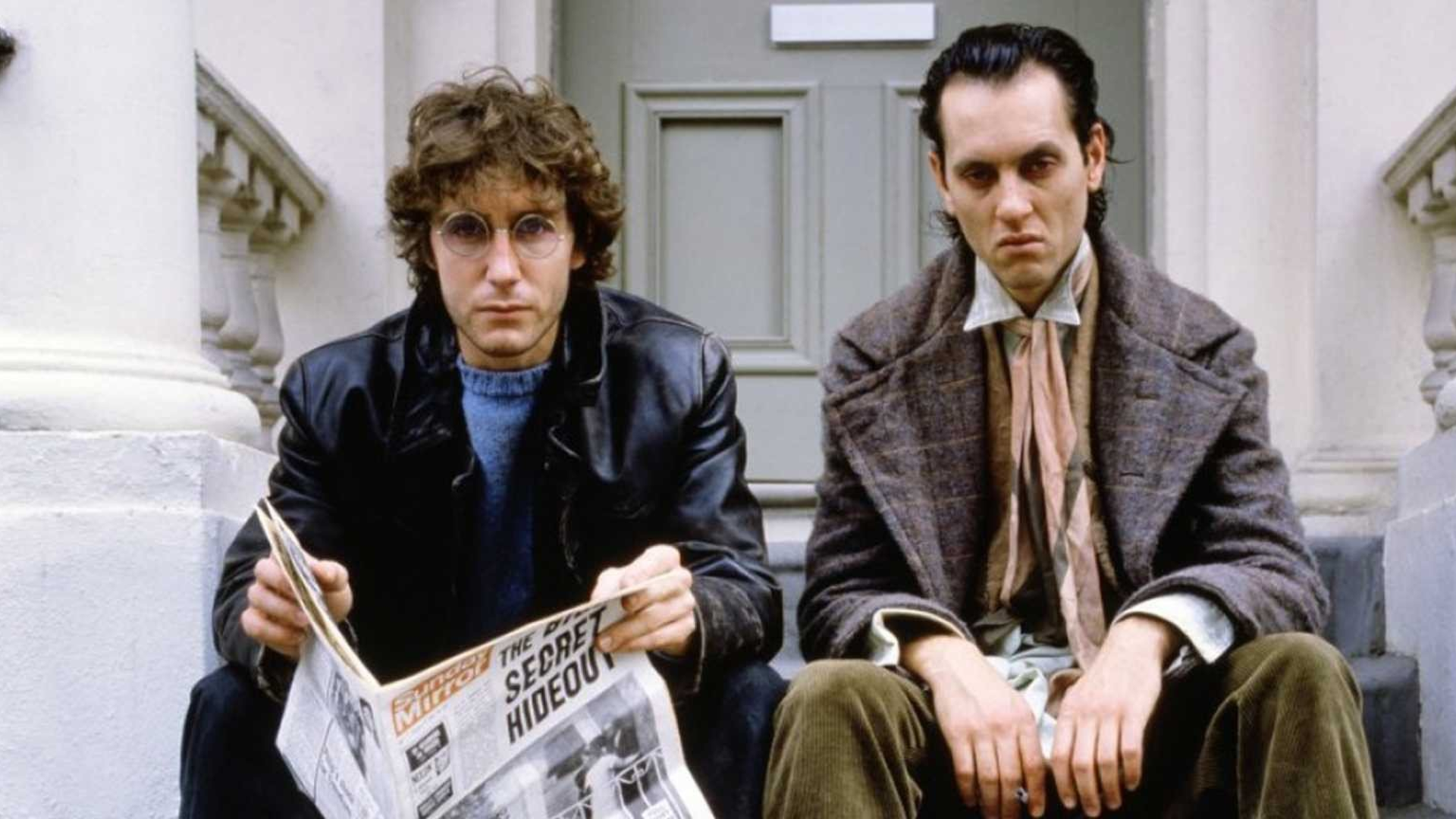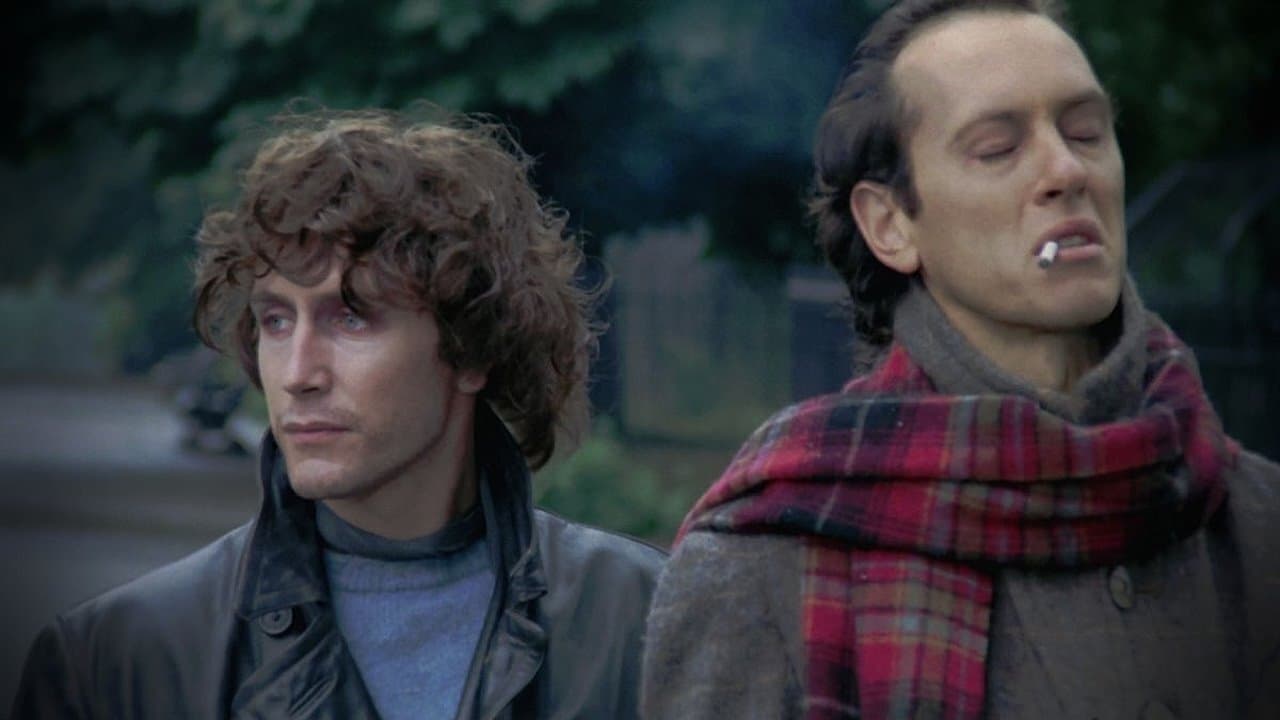Withnail and I (1987): Death of a Friendship
Last call everybody! Zoe takes a minute or so to alert you to the supreme quality of UK's most notorious cult film in our first full-length English-language review.

In the illustrious pantheon of cult films, Bruce Robinson's Withnail and I remains a curiously specific entry.
Most of its admirers identify it as quintessentially British. But the tale of two down-on-their-luck, holidaying-against-their-capacities actors in the late 1960s is also said to have a particular fanbase: Mostly male university students, with a proclivity towards ‘witty’ humour and unchristian amounts of alcohol. Indeed, I can claim to be in the clutches of higher education and my appreciation for Withnail and I’s numerous famed, quotable one-liners stems from a deep pretentiousness. But alas, I am also a woman and, even worse, a teetotaller.
Since this treasure is playing on ARTE until the end of the month, the timing seems appropriate to revisit it and reinvestigate why the film remains so funny, rich, and layered, almost 40 years on. Join me as we go…
On Holiday by Mistake
In the summer of 1986, Richard E. Grant got something he had waited nine months for: a call from his agent. The tall and angular actor was just starting his career in his late 20s and had only a meagre BBC TV-production to his name.
Originally from the tiny Swaziland in South Africa, like many before him, Grant had come to London to chase his dreams. And also like many other new thespians, he found himself struggling to even get an audition, much less an actual part. With each minute of unemployment, his desperation seemed to grow. Hitherto, he had passed his time bulking up with protein shakes, as he had convinced himself his natural thinness kept the job offers at bay.
His promise of salvation came in the form of a script titled Withnail and I, an effort by former actor Bruce Robinson, who had worked with greats like Franco Zeffirelli and François Truffaut before turning his back on the biz (or at least the bit in front of the camera). Withnail was loosely autobiographical, as the titular character and the overall plot were based on Robinson himself, the unsuccessful but larger-than-life actor Vivian MacKerrell and their friendship as the Summer of Love became autumn, when they were both young, gorgeous, intolerable, perpetually smashed and poor.
Thus, the script followed two equally unsuccessful actors: The titular Withnail, a bitter alcoholic with no sense of dignity or loyalty, and the technically unnamed I, his neurotic, but decidedly more agreeable flatmate. Their odd connection is sustained mostly by their shared misfortune. Because they are, as I puts it, “drifting into the arena of the unwell” together, they decide to weasel their way into a cottage in the countryside. What ought to become a respite sours pretty quickly, as
1. they are expectably ill-equipped for the simple life,
2. Withnail is even more cantankerous than usual and
3. Withnail's ageing, rich and gay uncle Monty, who owns the cottage, pays a surprise visit.

As Grant flipped through this script, he became one of the first to experience its particular balance between misery and comedy, its impeccable timing and sharp-tongued writing. And he intimately knew the reality behind these characters. He was dying to be cast. HandMade Films, the studio behind the project, was eyeing him for Withnail.So he kept his hopes in check. After all, this was a deeply Byronic type, and Grant was not English, overall pretty genial and, much like my humble self, a teetotaller (although for different reasons entirely: Grants body lacks the enzymes to break down alcohol, which is more of a case of ‘unable to drink’ than ‘abstaining from drink’. Nevertheless, I always appreciate company in the club).
After numerous auditions and call-backs, chemistry readings with actor Paul McGann (who was in talks to play I and went on to be a Doctor Who), almost being dumped in favour of Daniel Day-Lewis and countless sleepless nights, against all odds, Grant still got the part. Director Bruce Robinson swiftly informed him that he would have to shed the pounds he erroneously gained in the unemployed interim, as Withnail called for the emaciated appearance of an addict. Playing said addict, Grant has since gone on to affirm time and time again, kickstarted his career and bagged him every single role he got thereafter. His story carries two age-old lessons: Don’t stop believing and don’t change yourself to meet expectations, as thou mightst have to replace a protein-shake diet with a steamed-salmon-and-watermelon diet. Speaking of which…
Don’t Threaten Me With a Dead Fish
Now back to the central question: Just what makes Withnail so good? Of course, you could easily watch the documentary Withnail and Us and let a diverse cast of people with expertise explain it. But you're already here and I'm a monogamous creature who demands loyalty, so stay put.
Is it the setting, as everybody loves a bit of 1960s-counterculture-nostalgia? Unlikely, as the film indulges said nostalgia only sparingly with its Jimi-Hendrix-fueled-soundtrack. Otherwise, the view of the later Hippie-years is almost bleak, as the duos drug dealer summarises in the film: “We are 91 days away from the end of the 1960s, the greatest decade in human history.”. Pretty grim stuff, but it pops back up later in our investigation.
The plot sounds riveting though, doesn’t it? Two starving, inebriated artists manoeuvring themselves through shenanigans in the farmlands? Of course, what we find here is but a very frail construct of a plot. One in which events are mercifully driven by the people in it, but in which things kind of happen. Or, as Ed Power writes for The Telegraph:
“[…] not even [the films’) biggest fans would accuse Robinson of masterful plotting.”
“What about the optics then?", you might ask. Well… Robinson proves to be a competent director in his debut (despite, or maybe because of, his stressing numerous times during shooting that he barely knew what he was doing), but the whole affair looks pretty kitchen-sink-esque, with the charming, unpolished look not unlike the Monty Python features, also produced by HandMade Films. There are beautiful shots of British Cumbria and the set design for Withnail’s and I’s derelict flat is something to behold, but as far as filmmaking goes, we can hardly call Withnail ‘unconventional’ or ‘exceptional’ in style. This baby is all substance (pun very much intended).

But surely it must be the aforementioned one-liners then, lovingly recited by generations of fans and compiled here? Nay, I say, because having quotable lines can only help you so much. Take Quentin Tarantino, for example: Although his trademark dialogues earned him fame, fortune, awards and admirers, they also attracted as many detractors who claim him to be pretty reliant on pop-culture-popcorn-fanfare (not to mention the racist and sexist flavouring of said popcorn). And that’s not to mention the dreaded wannabe-cult films that have their characters say outlandish stuff without landing a punch.
Let me point the finger at another crowd-pleaser I am deeply devoted to about terrible people with substance abuse problems and their wacky adventures: Trainspotting. Now, this evergreen gem is aided and abetted by its 90s chic and inspired direction, but it also has the garden-variety drifting plot. We remember the entire piece and what its characters have to say because of them. You mainly watch because of Renton, or Sick Boy, or Spud, or Begbie. Through these people, we get to know the highs and lows of their intertwined lives as heroin addicts, and what they say and do is funny or tragic or moving because they seem very, very human and relatable.
Similarly, Withnail’s finest quality is, well, Withnail. And a good amount of I and Monty (the terrible cunt).
The Je-Ne-Sais-Quoi, Something Oh-So Very-Special About a Young, Firm Carrot
Much like in the case of Trainspotting, you might shy away from aligning yourself with an unsympathetic, cowardly and overall unpleasant addict. Even if you are one yourself.
As previously mentioned, I practise abstinence and have done so for nearly all of my life. My experiences with alcohol are limited to one beer and one pint of liquor. Never smoked pot, never did the heavier stuff. I am duly unequipped to comment on the authenticity of Withnail's portrayal of addiction. But I deeply love someone who is an addict (of the recovering variety), and through having observed them for much of their delirious path, I know that this Withnail guy is spot on. And so is the tad-more-functional I, who is never named in the script, but whom eagle-eyed viewers have identified as Marwood based on a blink-and-you’ll-miss-it inscription on an envelope. If this doesn’t speak to people’s dedication to and interest in these characters, I don’t know what does.
Withnail and I is the story of these two guys, their egocentric errors and moments of humiliation. It is outrageously funny, but not quite fun. And not coincidentally so, as Bruce Robinson observed about his friendship with Vivian MacKerrell that inspired it:
“No one laughed at us, you know? They didn’t think we were amusing at all. In fact, they thought we were awful bums.”
But addict or not, who cannot relate to battling with weeks of undone dishes, to being annoyed by your selfish roommate and to just wanting a rest from the dysfunction of your life?
The film is popular with university students for a reason.

Layers are slowly peeled off a dynamic that Marwood is starting to outgrow. But no matter how detestable and foppish Withnail gets, we never really question why Marwood has stuck around. It doesn’t take long to fall under Withnails spell ourselves. The man is a nightmare, but an intriguing one, especially when Grant lends him a wry half-smile with this tangible hint of deep regret. This pathetic drunk, who constantly bemoans how unjust it is that he is not famous, is quite probably almost correct. We see the charm and, later on, the talent. But we could also immediately tell Withnail why he hasn’t made it yet, and he secretly must know it himself. You can tell by the way Grant carries the role, and it is one of the finest pieces of acting to this day because of his commitment. As an unmatched colleague put it:
“Richard E. Grant never, ever, not for a second, breaks character; he is relentlessly wounded and aggressive. He never goes too far, he never relaxes, he aims at the end of the movie and charges.”
Of the pair, Paul McGann’s Marwood is condemned to pale in comparison. Even so, there are nice little touches of depth, like the fact that in contrast to the entitled Withnail, we do see him prepare for acting jobs. But one of his distinct neuroses catches the eye: He is deathly afraid of queerness. Of being accused of it, perceived to be it, to be near it. Which opens the gate to a reading of this friendship that goes beneath the surface.
Sure, Marwood’s a man of the not-that-enlightened 60s, but his life revolves around a man with whom he lives, argues in the bath with (while offering him a sausage, for Christ's sake) and with whom he cuddles up in bed once things get spooky. We also question Withnail, who seems always ready to discard his pal but reacts with barely concealed pettiness whenever the two have a tiff. The subtext of their relationship is not lost on Uncle Monty, an unmistakeable beast of nature.
Let this be the moment in which we sing the praises of Richard Griffiths, who, in my opinion, is not nearly lauded enough for his performance in this film. A lot of Withnail-ites point to Danny the drug dealer (Ralph Brown) as the other standout act; I beg to differ. Under Griffiths’ careful guidance, Monty becomes a man with a few nasty qualities and an air of camp that could expose him to mockery. Instead, he is offered a great deal of empathy by Griffith, eventually by Withnail and Marwood and, surprisingly, by the script.
I say surprisingly because Robinson based him on a real person as well: Director Franco Zeffirelli, who sexually assaulted him on the set of Romeo and Juliet (1968). Yet there is not even a hint of homophobic sentiment to be found once we’ve gotten to know these characters. Monty is, beneath all the sissy antics, a very lonely man and Withnail’s and Marwood’s relationship is marked by comfortable but hostile intimacy. Whatever they really feel for each other, this is a tragic comedy not only about the end of their decade, but the end of their friendship.
In the introduction to the print version of the screenplay, Bruce Robinson dedicates it to his old chum Vivian MacKerrell, whom he saw increasingly less of after the 1960’s:
“And I can’t believe Vivian is dead. He got cancer of the throat and they tore his voice out. And the fellow I’d always thought of as being the biggest coward I’d ever met materialized into the bravest bastard I’d ever known. It’s got to be hard to laugh when you’re dying, but I’ll always remember you laughing. That sad, brilliant, bitter face of yours laughing. Goodbye my darling friend. This is for you for ever. And I know if there’s a pub in heaven, you’ll be in it. And Keats will be buying the drinks.”
I Shall Miss You, Withnail
We still don’t talk about the importance of friendships enough. Not on the same level as our romances, anyway. By no means do I want to downplay the loves of my life, but the lost relationships I grieve and ache for to this day are the friendships.
I long for the boy who grew up on the same street as me. The shy and soft child of a large Kasakh family, who gifted me flowers on every birthday and fearlessly replied to accusations of faggotry on our way to school with “I’m bisexual, actually!”. I also desperately miss my best friend from school, who valued me despite the disapproval from her parents, who drove across the country because she missed my couscous salad and who would go on to save lives on long hospital shifts. And I still cry about the friend who lived in the same apartment block as me, in a similarly tiny room, who would join me multiple times a week to commiserate about Uni, bemoan tragic dating escapades and get thoroughly stuffed with Toffifee.
All these relationships were lost to time, fizzled out, ended in angry words or unanswered text messages. You can shrug and say “Well, that’s life.”. Withnail and I doesn’t. When we arrive at the films conclusion, not only is the great Bard cited, but a rain-soaked Shakespearian tragedy on a miniscule level also unfolds before our eyes. None of it is trivial. Not even to Withnail, who has seemingly stopped really caring about anything - except Marwood.
So with this, I implore you to do two things, in this order: First, give Withnail and I a shot. It is wholly deserving of its cult status, retains a fresh spirit and a deep human soul under its snark and is entirely free to watch on ARTE, so you have nothing to lose, really. And secondly: Call up your friends. The ones that got away. The ones that remained by your side. The ones that you can’t picture life without because life isn’t worth a damn but they make it nice. Shamelessly tell them you love them. We only got so much time.
Splendid!
Withnail and I is available on ARTE until February 28th, 2024 in the German region.
Special thanks to the incomparable Amanda Hua, who inspected this review like a hawk and made sure I wouldn't do grave harm to the English language. Or the art of entertainment-oriented writing.

